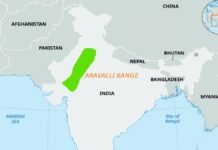
Key Points
- Ali Akbar Velayati claims US seeks military bases near Iran’s Chabahar and Pakistan’s Gwadar ports
- Strategy allegedly aims to control Asian trade routes and contain China’s growing influence
- Velayati cites increased Pakistan military officials’ visits to US in recent months
- Chabahar Port received US sanctions exemption in 2018 for Afghanistan reconstruction
- India operates Shahid Beheshti terminal with $120 million investment commitment
- 10-year India-Iran agreement signed May 2024 ensuring port operations through 2034
- Pakistan Army Chief Field Marshal Asim Munir met senior US officials in August-September 2025
- Chabahar serves as India’s strategic counter to China-operated Gwadar Port
- Port integral to $370 million International North-South Transport Corridor linking India to Russia-Europe
New Delhi: Ali Akbar Velayati, the international affairs adviser to Iran’s Supreme Leader Ali Khamenei, made explosive allegations on November 10, 2025, claiming the United States is attempting to establish new military bases near strategically vital ports on the Gulf of Oman. Speaking to Iran’s official IRNA news agency, Velayati stated that Washington’s plan to expand its military presence near Pakistan’s Gwadar port and along Iran’s southern coast represents a broader effort to counter China’s growing regional influence and secure maritime routes linking South Asia to the Middle East.
“The US wants new bases near this vital area to maintain its dominance over regional trade and to contain China’s rise,” Velayati declared. He positioned these alleged military expansion plans within the context of America’s global competition with Beijing, suggesting that control over these strategic chokepoints would allow Washington to monitor and potentially disrupt trade flows between China, the Middle East, and Africa.
Increased US-Pakistan Military Engagement Cited as Evidence
Velayati’s allegations gain context from documented high-level engagements between Pakistani military leadership and American officials throughout 2025. Pakistan’s Army Chief Field Marshal Syed Asim Munir conducted an official visit to the United States in August 2025, during which he engaged with senior American military and political leadership, according to Pakistan’s military media wing. The meetings occurred as Islamabad seeks closer defense and security ties with Washington under the Trump administration.
In September 2025, Pakistani Prime Minister Shehbaz Sharif and Field Marshal Asim Munir jointly met US President Donald Trump at the White House. Trump praised both leaders, stating, “Field marshal is a very great guy and so is the prime minister, both,” signaling renewed American interest in strengthening bilateral relations after years of strained ties mainly over counter-terrorism disagreements. Under Trump’s renewed outreach, Washington has praised Pakistan’s leadership and reinstated military cooperation previously curtailed over Afghanistan-related concerns.
US Strategic Interests in Containing Chinese Influence
Velayati’s claims reflect genuine geopolitical tensions in the region, where both Chabahar and Gwadar ports represent critical nodes in competing visions for Asian connectivity. Gwadar Port, located in Pakistan’s Baluchistan province, serves as the maritime terminus of the China-Pakistan Economic Corridor (CPEC), an estimated $54 billion infrastructure megaproject that forms the centerpiece of China’s Belt and Road Initiative in South Asia.
The port connects China’s western Xinjiang province to the Arabian Sea, providing Beijing a strategic alternative to the Malacca Strait chokepoint through which much of its energy imports currently pass. China Overseas Port Holding Company has been expanding Gwadar Port, constructing nine new multipurpose berths along 3.2 kilometers of seafront. However, nearly two decades after construction began, Gwadar has struggled to achieve its envisioned status as a bustling trade hub, with infrastructure development facing significant security and operational challenges.
Chabahar Port: India’s Strategic Gateway to Central Asia
India’s Chabahar Port project represents New Delhi’s strategic response to China’s Belt and Road Initiative and Pakistan’s control over traditional land routes to Afghanistan and Central Asia. Located in Iran’s Sistan-Baluchistan province on the Gulf of Oman, Chabahar provides India with direct maritime access to Afghanistan and Central Asian markets, completely bypassing Pakistani territory.
On May 13, 2024, India and Iran signed a landmark 10-year contract for the operation of the Shahid Beheshti Terminal at Chabahar Port. Under this agreement, India Ports Global Limited (IPGL) committed to invest approximately $120 million to develop and operate the terminal, while India also offered a $250 million line of credit for mutually identified infrastructure projects aimed at improving Chabahar-related connectivity.
The 2024 agreement came after years of negotiations that began in 2003 and accelerated following Prime Minister Narendra Modi’s visit to Tehran in May 2016, when India, Iran, and Afghanistan signed a trilateral agreement establishing the International Transport and Transit Corridor. The recent contract breakthrough occurred after both sides agreed to drop an arbitration clause that had been a major obstacle during negotiations at the 15th BRICS summit in Johannesburg in August 2023.
Rare US Sanctions Exemption Highlights Strategic Convergence
In a rare instance of indirect US-Iran cooperation, Washington granted Chabahar Port a special exemption from sanctions in November 2018, specifically to facilitate Afghanistan’s reconstruction and development efforts. The exemption, provided under Section 1244 of the Iran Freedom and Counter-Proliferation Act of 2012, permits certain activities, including Afghanistan’s imports of refined petroleum products such as gasoline, diesel, and liquefied petroleum gas from Iran through the port.
A US State Department spokesperson at the time explicitly stated that President Donald Trump’s South Asia strategy “underscores our ongoing support of Afghanistan’s economic growth and development, as well as our close partnership with India.” The exemption reflected Washington’s acknowledgment that sanctioning Chabahar would undermine American strategic interests in Afghanistan and damage relations with India, a key partner in countering Chinese influence across the Indo-Pacific region.
Afghan President Ashraf Ghani personally lobbied US officials to ensure Chabahar remained exempt from sanctions, recognizing the port’s critical role in Afghanistan’s economic survival. The exemption highlights the complex geopolitical calculations where US hostility toward Iran paradoxically aligns with supporting an Iranian port operated by India to stabilize Afghanistan and counter Chinese and Pakistani influence.
International North-South Transport Corridor Integration
Chabahar Port serves as a crucial link in the International North-South Transport Corridor (INSTC), an ambitious multimodal transportation network designed to connect India’s western ports to Russia’s Baltic Sea coast via Iran and the Caspian Sea. The INSTC, which involves 13 participating countries including India, Russia, Iran, Azerbaijan, and several Central Asian nations, aims to drastically reduce shipping times and costs compared to traditional routes through the Suez Canal.
According to industry estimates, cargo shipments through the INSTC route would take approximately 15 days less compared to the Suez Canal route, potentially saving significant transportation costs. The corridor envisions the seamless movement of goods spanning thousands of kilometers from India through Iran to Central Asia, Russia, and ultimately to European markets, creating an alternative trade axis that bypasses Western-controlled maritime chokepoints.
India’s development of Chabahar specifically positions the port as the maritime gateway for Indian goods entering this corridor. The $250 million line of credit India has offered for infrastructure development includes improvements to road and rail connectivity between Chabahar and Afghanistan, as well as the Chabahar-Zahedan railway that would link the port to Iran’s national rail network and ultimately to Central Asian rail systems.
India’s Multi-Billion Dollar Commitment
Since the project’s inception, India has demonstrated a sustained commitment to Chabahar’s development despite international sanctions pressures. India Ports Global Limited assumed operational control of the port in December 2018 through its subsidiary, India Ports Global Chabahar Free Zone (IPGCFZ). India has provided six Mobile Harbour Cranes and other equipment valued at $25 million as part of the initial development phase.
The total Indian investment commitment now exceeds $370 million when combining the $120 million IPGL will invest in terminal equipment and operations with the $250 million credit line for infrastructure projects. This represents one of India’s largest overseas port infrastructure investments and underscores New Delhi’s assessment of Chabahar’s strategic value.
Under the 2016 trilateral agreement with Iran and Afghanistan, India originally announced a loan of approximately $150 million (₹1,250 crore) specifically for port development. The expanded financial commitments in the 2024 agreement reflect India’s determination to make Chabahar operational and competitive despite the port’s relative isolation under international sanctions and regional security challenges.
Chabahar vs Gwadar: Competing Visions for Regional Connectivity
The geographic proximity of Chabahar and Gwadar, separated by less than 100 kilometers along the Gulf of Oman coast, creates a direct strategic rivalry between India’s and China’s competing connectivity visions. While China has invested heavily in Gwadar as the maritime gateway for its Belt and Road Initiative into Pakistan and beyond, the port has faced significant operational challenges, including security concerns, insufficient cargo volumes, and resistance from local Baloch populations who feel excluded from economic benefits.
Chabahar, conversely, benefits from Afghanistan’s desperate need for alternative trade routes that bypass Pakistan, with which Kabul maintains tense relations. Afghan goods can transit through Chabahar to reach global markets, while Indian exports, particularly wheat, pharmaceuticals, and machinery, can reach Afghan markets without crossing Pakistani territory. This trade flow provides Chabahar with organic cargo volumes that Gwadar has struggled to attract despite superior infrastructure investments.
India explicitly positions Chabahar as its strategic response to China’s Belt and Road Initiative, which New Delhi refuses to endorse due to the China-Pakistan Economic Corridor passing through Pakistan-administered Kashmir that India claims as its territory. By developing Chabahar, India creates an alternative connectivity paradigm linking South Asia to Central Asia and beyond while maintaining its geopolitical principles.
Regional Power Dynamics and Western Resistance
Velayati’s statements also reflected broader Iranian perspectives on resisting what Tehran characterizes as Western interference and domination. He stated that the US is facing growing resistance to its presence across several regions, including the Middle East and Asia, and emphasized that Iran, “as an independent and influential state, will continue to work with Asian and Islamic nations that oppose what he called Western interference and domination.”
These comments position Iran’s cooperation with India on Chabahar within a larger framework of Asian nations seeking strategic autonomy from Western influence, despite the contradiction that US sanctions exemptions have actually facilitated the port’s development. The complexity reflects the multi-layered geopolitical competition in the region where traditional adversaries find tactical common ground on specific issues while maintaining broader strategic rivalries.
Future Implications for Regional Security Architecture
The convergence of US military engagement with Pakistan, Iran’s allegations of American base expansion plans, and India’s deepening commitment to Chabahar creates a volatile mix of competing interests along the Gulf of Oman coast. As global powers jockey for influence over trade routes carrying energy resources and manufactured goods between Asia, the Middle East, and Africa, the Chabahar-Gwadar corridor has emerged as a critical flashpoint where American, Chinese, Indian, Iranian, and Pakistani interests collide.
The 10-year India-Iran agreement ensures continued Indian presence at Chabahar through 2034, with provisions for further extension. As trade volumes grow along the International North-South Transport Corridor and Afghanistan’s reconstruction progresses, the strategic importance of both Chabahar and Gwadar will likely intensify, potentially drawing greater military attention from regional and global powers seeking to protect or challenge maritime trade flows through these vital chokepoints.


















































